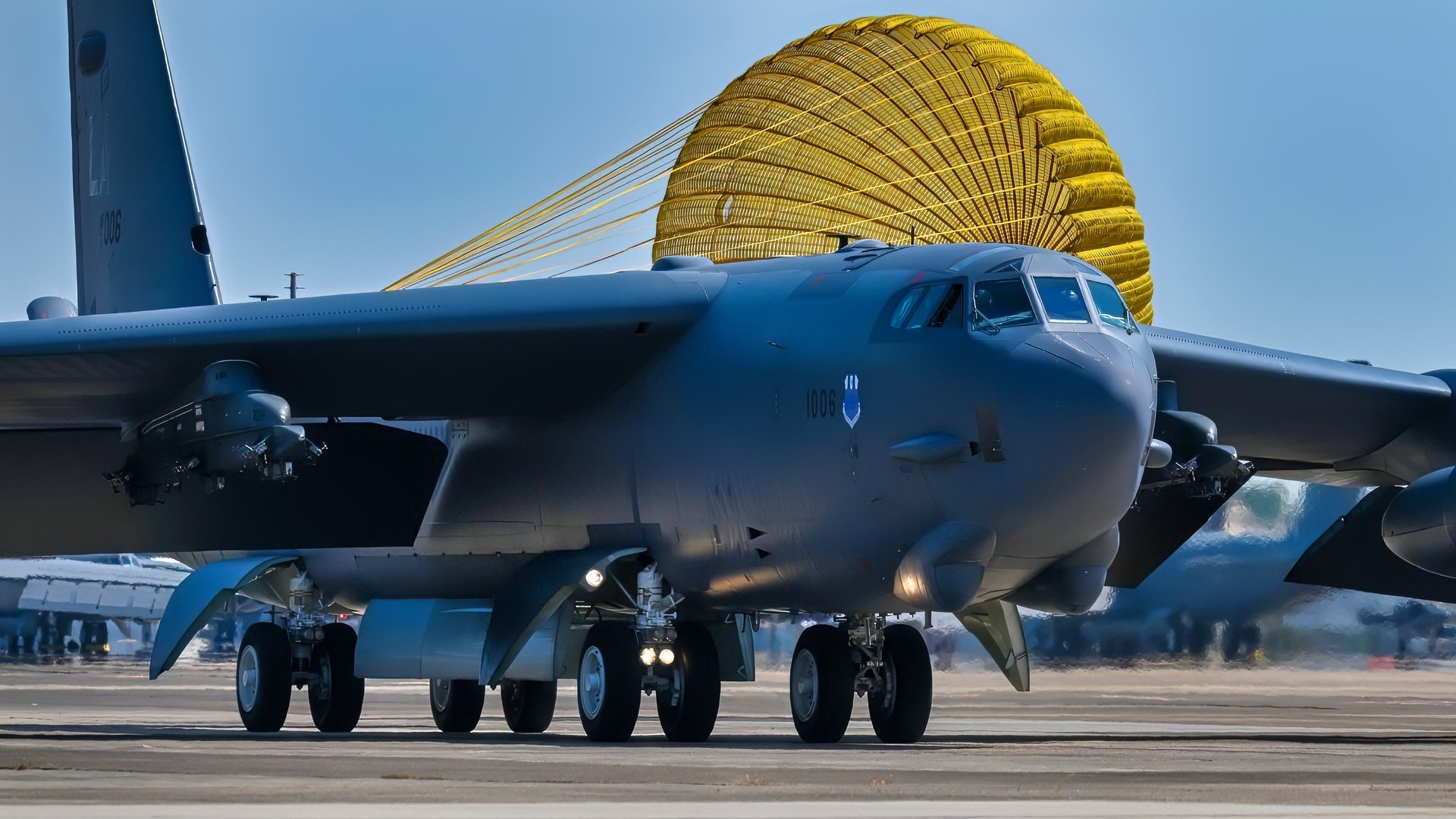Key Points and Summary – The Trump administration is escalating military pressure on Venezuela, signaling a potential move toward regime change. In a major show of force this week, three U.S. B-52 bombers flew orbits in international airspace off the Venezuelan coast.
-This follows the deployment of a large naval flotilla to the region and President Trump’s recent authorization of covert CIA action against Nicolás Maduro’s government.
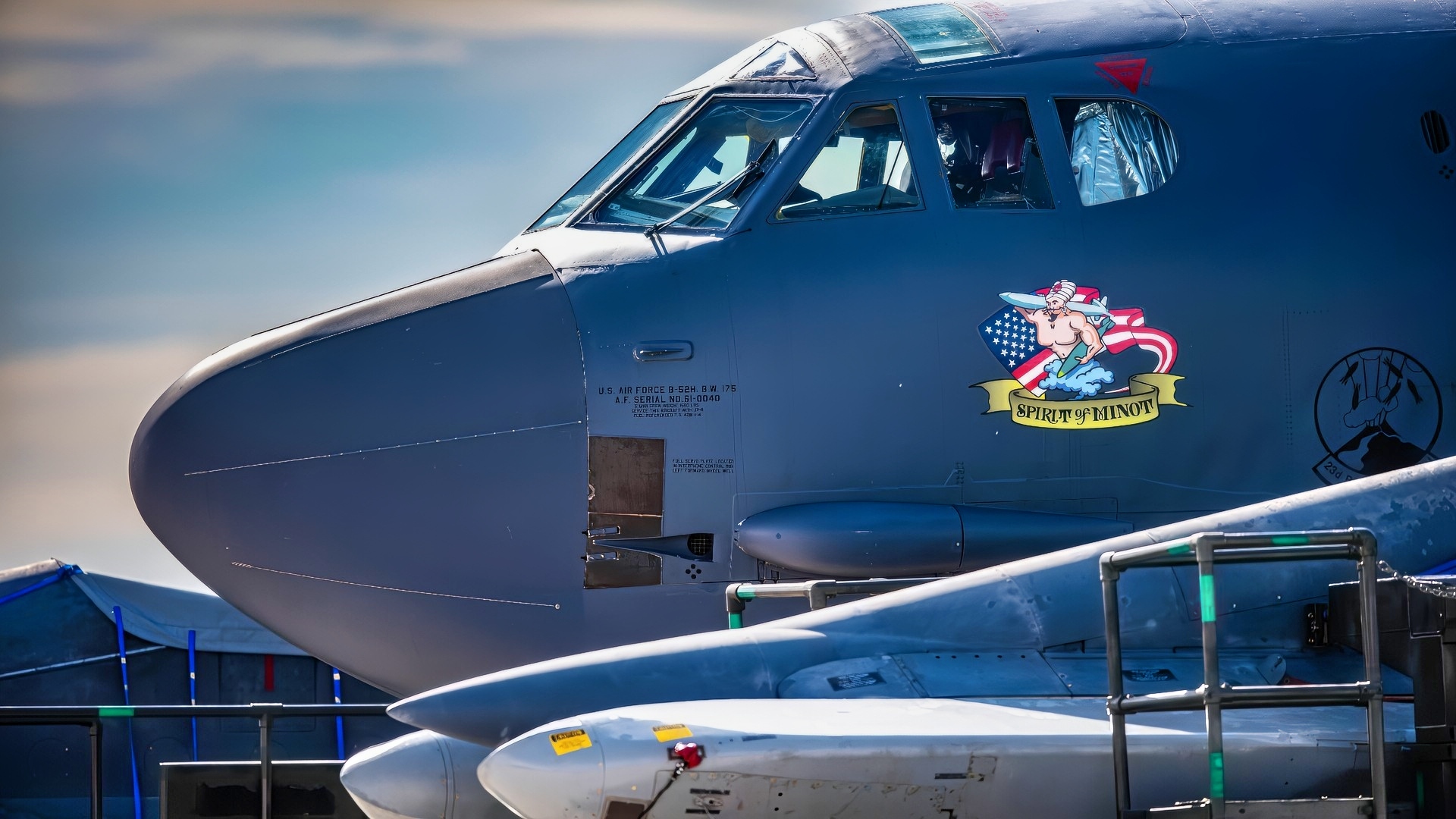
A U.S. Air Force B-52H Stratofortress assigned to the 23rd Bomb Squadron sits on the flightline during exercise Prairie Vigilance 25-1 at Minot Air Force Base, North Dakota, April 12, 2025. Vigilance series exercises are conducted with a focus on the safe and secure handling of equipment. (U.S. Air Force photo by Senior Airman Kyle Wilson)
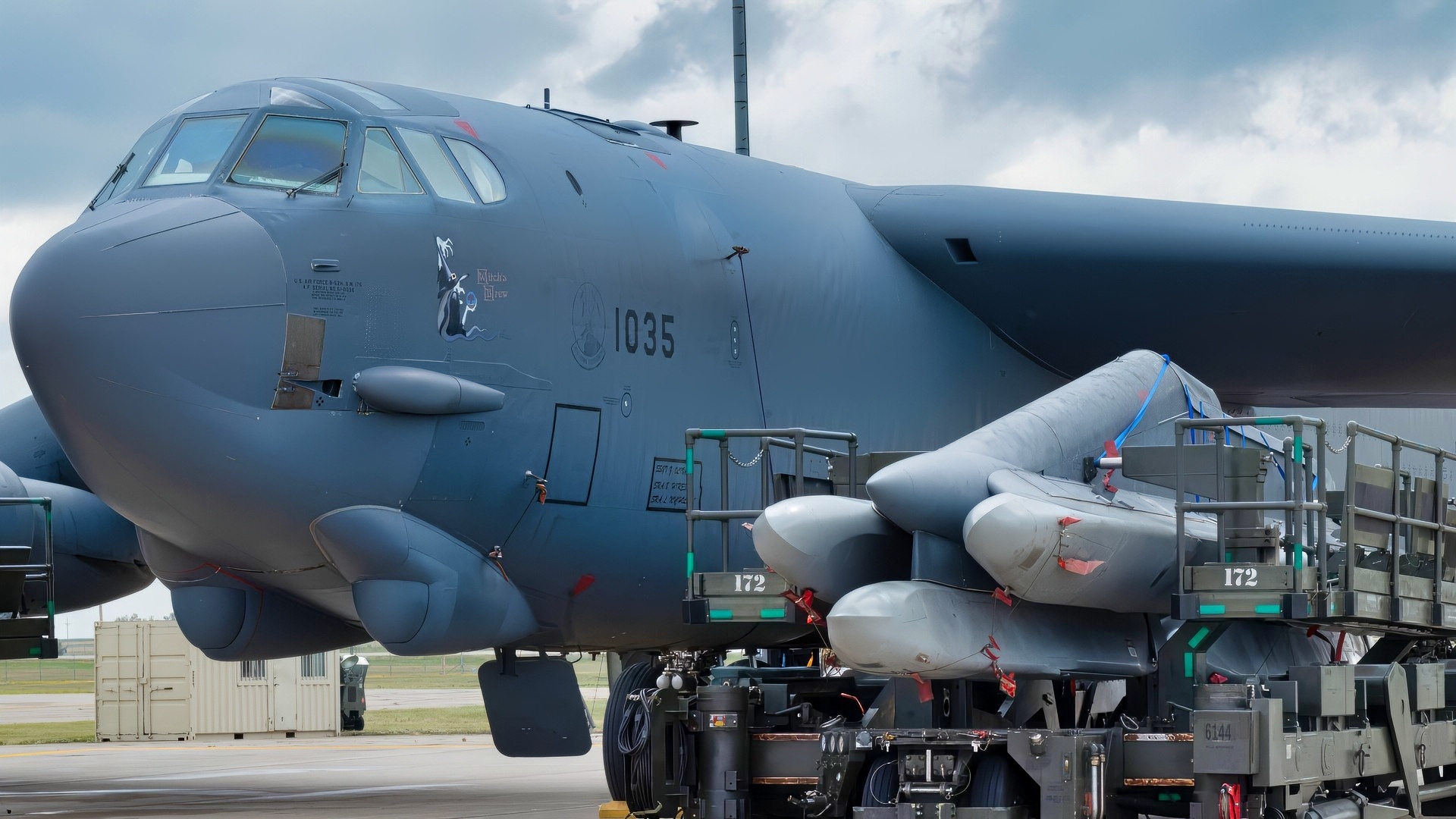
A B-52H Stratofortress sits on the flightline before a munitions load operation at Minot Air Force Base, North Dakota, Sept 5, 2025. The base-wide readiness exercise tested the wing’s ability to generate aircraft, conduct security operations and respond to challenging scenarios. (U.S. Air Force photo by Airman 1st Class Vincent Padilla)
-While Trump has framed the military buildup as part of his war on drug cartels, analysts warn that an attempt to topple the regime could lead to a chaotic and costly occupation, repeating past U.S. failures.
The B-52 Bomber Is Flying Close to Venezuela
The Trump administration has been taking shots at the regime in Venezuela. On multiple occasions, the U.S. has struck boats in the Caribbean—boats they claim were involved in drug smuggling. Various destroyers and submarines have also been sent to the region in recent weeks.
The administration has also announced plans to approve covert CIA actions in the country, which is not typically something that is announced in advance. In all, according to CBS News, the president has deployed “eight warships, a nuclear-powered submarine, and fighter jets to the region,” along with 10,000 U.S. personnel, either on ships or in the territory of Puerto Rico.
Responsible Statecraft reports that the Caribbean is currently host to “an astonishing quantity of American naval and air assets, including four Arleigh Burke–class destroyers, a guided missile cruiser, an attack submarine, a Marine Amphibious Ready Group, and a flight of F-35 multirole fighters.”
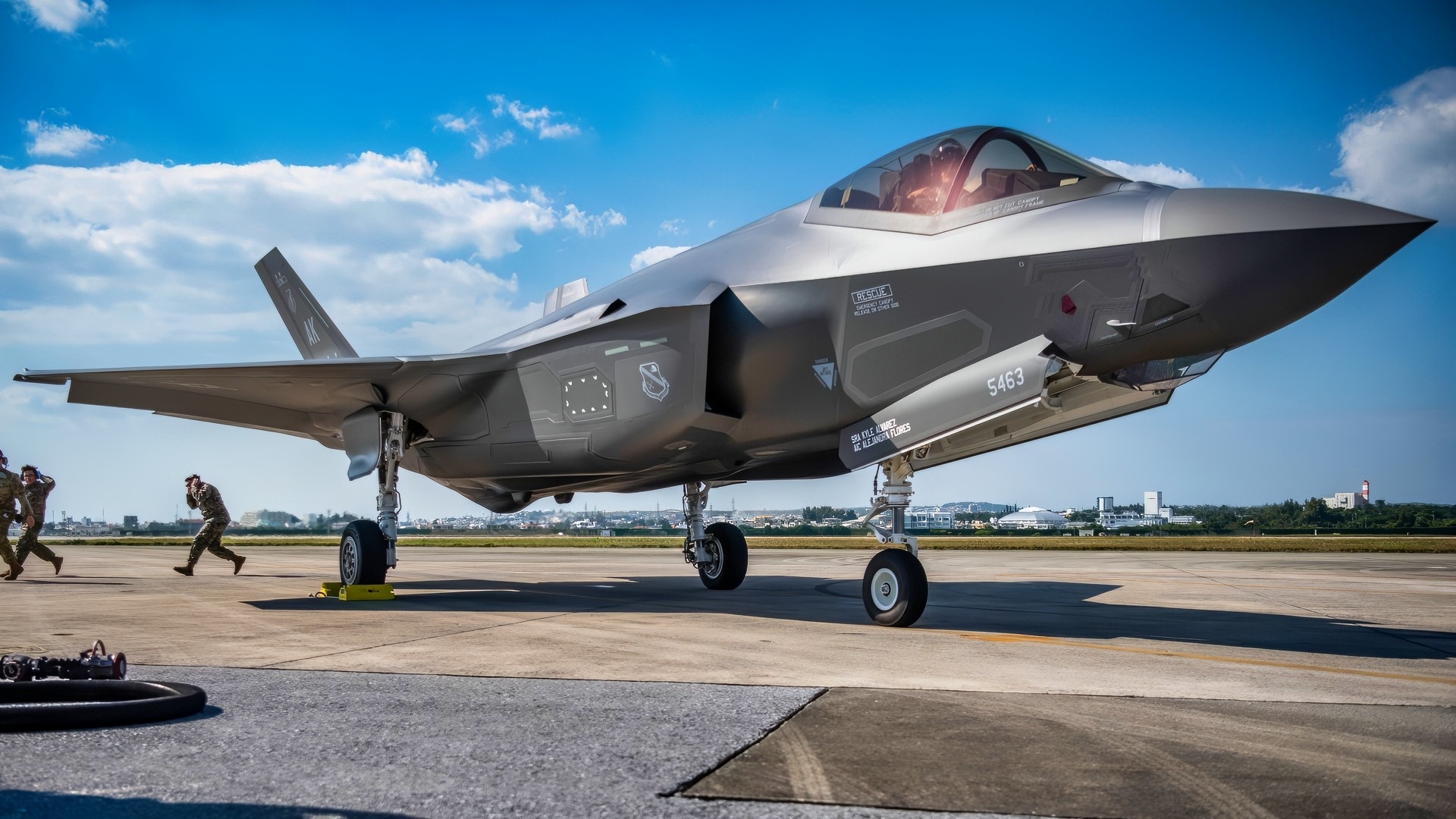
A U.S. Airman and two U.S. Marines support an F-35A Lightning II during joint hot pit refueling training at Kadena Air Base, Japan, March 10, 2022. Hot pit refueling uses a single-point refuel pump, which allows an aircraft to be rapidly refueled immediately after landing, while the engine is running. This cuts down on response time and ensures the mission can be completed anytime, anywhere. (U.S. Air Force photo by Airman 1st Class Anna Nolte)
And while Trump has long sought to avoid protracted wars and has spent much of his second presidency campaigning to win the Nobel Peace Prize, the president appears poised to actively seek to overthrow the Maduro regime in Venezuela. (Ironically, the winner of this year’s Nobel Peace Prize was María Corina Machado, the Venezuelan dissident and opposition leader.)
Now, U.S. bombers have appeared near Venezuela.
Showing Force with B-52 Bomber and F-35 Fighters
According to the War Zone, which called it “a major show of force aimed at Venezuelan dictator Nicolas Maduro,” a trio of B-52 bombers was tracked “flying orbits in international airspace off the coast of Venezuela,” on Wednesday.
The three bombers, called BUNNY01, BUNNY02, and BUNNY03, left Barksdale Air Force Base in Louisiana and headed South. They ended up flying in what Venezuela calls the “Maiquetía Flight Information Region (FIR),” which is international airspace near Venezuela. They flew around for about two hours.
The War Zone added that U.S. F-35 Joint Strike Fighters had been spotted in the area in recent weeks as well.
The Venezuelan Air Force has a “pocket fleet” of U.S.-made F-16 fighters, and per TWZ, there are unconfirmed reports that at least one of them “took off from El Libertador Air Base, situated to the west of Caracas, while the B-52s were orbiting offshore.” Maduro ordered “snap exercises” in response to the appearance of the bombers, TWZ said.
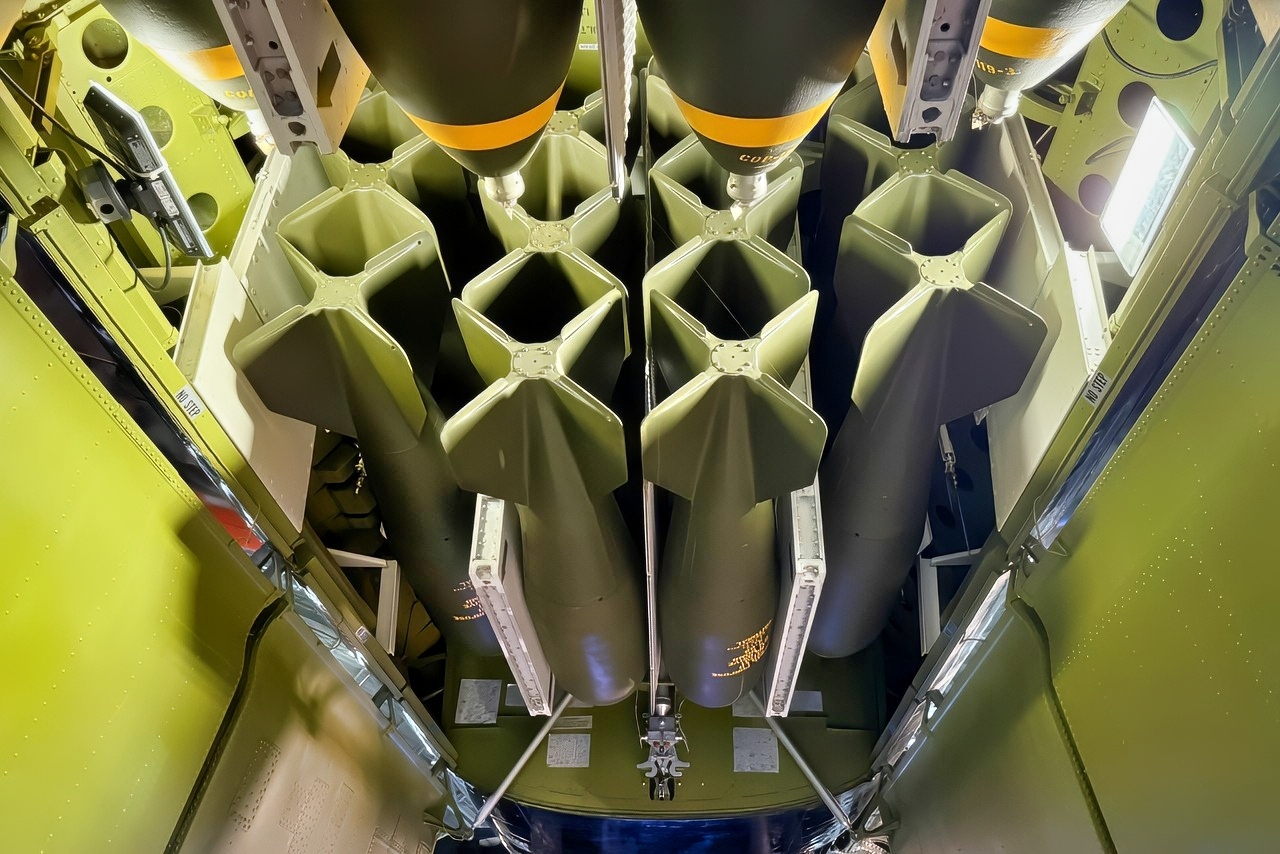
Bombs Inside the B-52 Bomber. Photo taken by Harry J. Kazianis/National Security Journal.
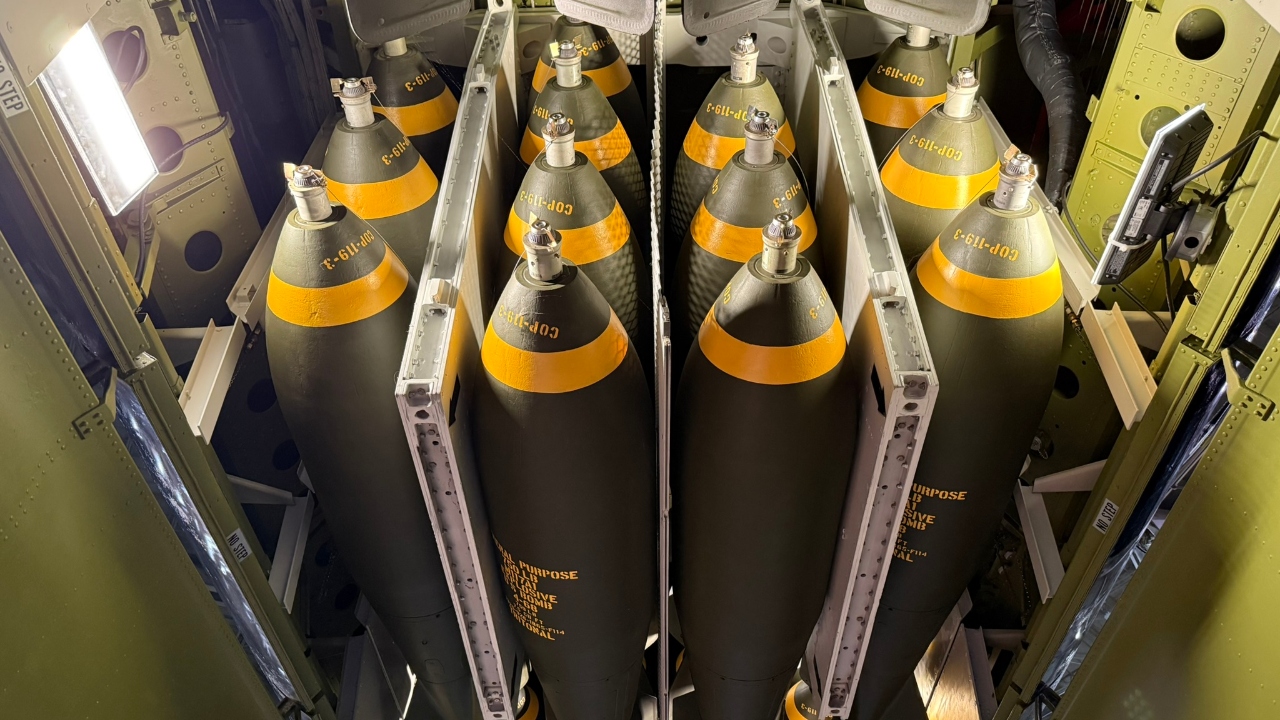
B-52 Bomber Bombs. Image Credit: National Security Journal.
According to Aero Mugs, the country’s Bolivarian Military Aviation “stands as a critical component of the country’s defense, tasked with safeguarding its sovereignty and airspace.”
“While facing considerable headwinds in terms of economic constraints and geopolitical pressures, the Bolivarian Military Aviation continues to play a pivotal role in safeguarding Venezuela’s airspace,” the Aero Mugs article says. “Its journey reflects a broader narrative of resilience and strategic adaptation in the face of adversity, making it a subject of ongoing interest for those observing military aviation in Latin America and beyond.”
What Covert Action?
Trump this week told CBS News that he has authorized covert action by the CIA in Venezuela because “they have emptied their prisons into the United States of America” and “allowed thousands and thousands of prisoners” and “people from mental institutions, insane asylums” into the United States.
Trump has claimed that Maduro is effectively in control of the Tren de Aragua drug cartel, which the Venezuelan government has denied.
“A Different Plan”
According to Politico, the current approach to Venezuela is different from what the Trump administration did during Trump’s first term.
In early 2019, the first Trump administration recognized Juan Guaido, and not Maduro, as the rightful president of Venezuela and the winner of that year’s presidential election. It never stuck, and Maduro remains in power today.
In early 2020, there was an ill-fated coup attempt in that country, possibly with the tacit approval of the Trump administration, which was chronicled in the recent documentary film Men of War.
But now, Trump is taking a different approach.
“Even though Trump continues to say Maduro is an illegitimate leader, he has said ‘we’re not talking about‘ regime change in Caracas,” Politico said of Trump’s current approach. “Instead, he’s emphasizing the long-standing accusations that the strongman is a drug lord and a dangerous criminal. The plan, people familiar with the situation tell me, is to force Maduro out as part of Trump’s ongoing fight against drug cartels.”
That article was published earlier this week, before the news about the CIA’s covert authorization. It did note, however, that “while Trump admires many of the world’s autocrats, he has long appeared to genuinely dislike Maduro.”
It Could Get Ugly
What will happen if the Venezuelan regime falls?
It’s risky to push for that outcome, and for the same reasons that outside regime-change efforts have always been risky: It’s far from clear what a new regime would look like, whether it would hold any legitimacy, and whether there would be future blowback.
This is to say nothing of the notion that Trump rose to power in the Republican Party in part by criticizing the Iraq War; his current posture is one of avoiding wars and seeking peace.
According to an analysis published this week by Responsible Statecraft, an effort to topple the government in Venezuela could result in “invasion, chaos, and heavy losses.”
“The volume of firepower employed for what is normally a relatively sedate task has created broad suspicion at home and in Venezuela that a military intervention against the Bolivarian Republic is on tap,” the analysis said.
Maduro wrote a letter to the United Nations expressing fear that an invasion of his country is imminent.
“The real risks of such an operation, however, come after the invasion. Toppling Maduro’s government is one thing; there is no real chance that the impoverished and corrupt Venezuelan armed forces can put up a serious fight against the American military. But occupying and rebuilding the country is another, as the U.S. learned to its chagrin in the Middle East,” Responsible Statecraft wrote. “While Venezuela is no Afghanistan … there are still very serious challenges an incoming government will face.”
About the Author: Stephen Silver
Stephen Silver is an award-winning journalist, essayist, and film critic, and contributor to the Philadelphia Inquirer, the Jewish Telegraphic Agency, Broad Street Review, and Splice Today. The co-founder of the Philadelphia Film Critics Circle, Stephen lives in suburban Philadelphia with his wife and two sons. For over a decade, Stephen has authored thousands of articles that focus on politics, national security, technology, and the economy. Follow him on X (formerly Twitter) at @StephenSilver, and subscribe to his Substack newsletter.
More Military
The First 48 Hours of a War With China ‘Could Be Ugly’
Russia Tried to Build Their Very Own F-22 Raptor. Calling It a Disaster Would Be a Gift
The Royal Navy’s Queen Elizabeth-Class Aircraft Carriers Simply Summed Up in 4 Words


